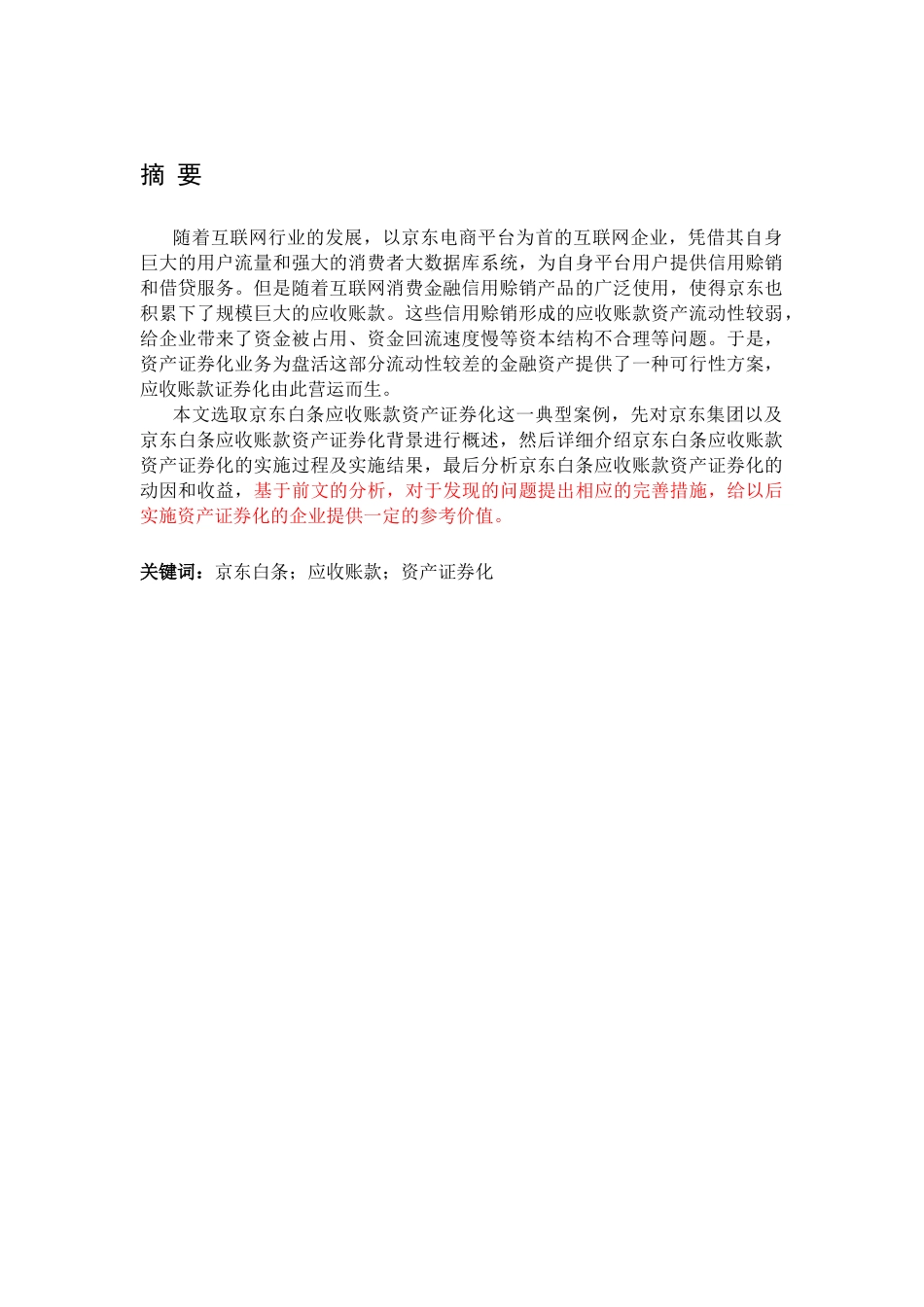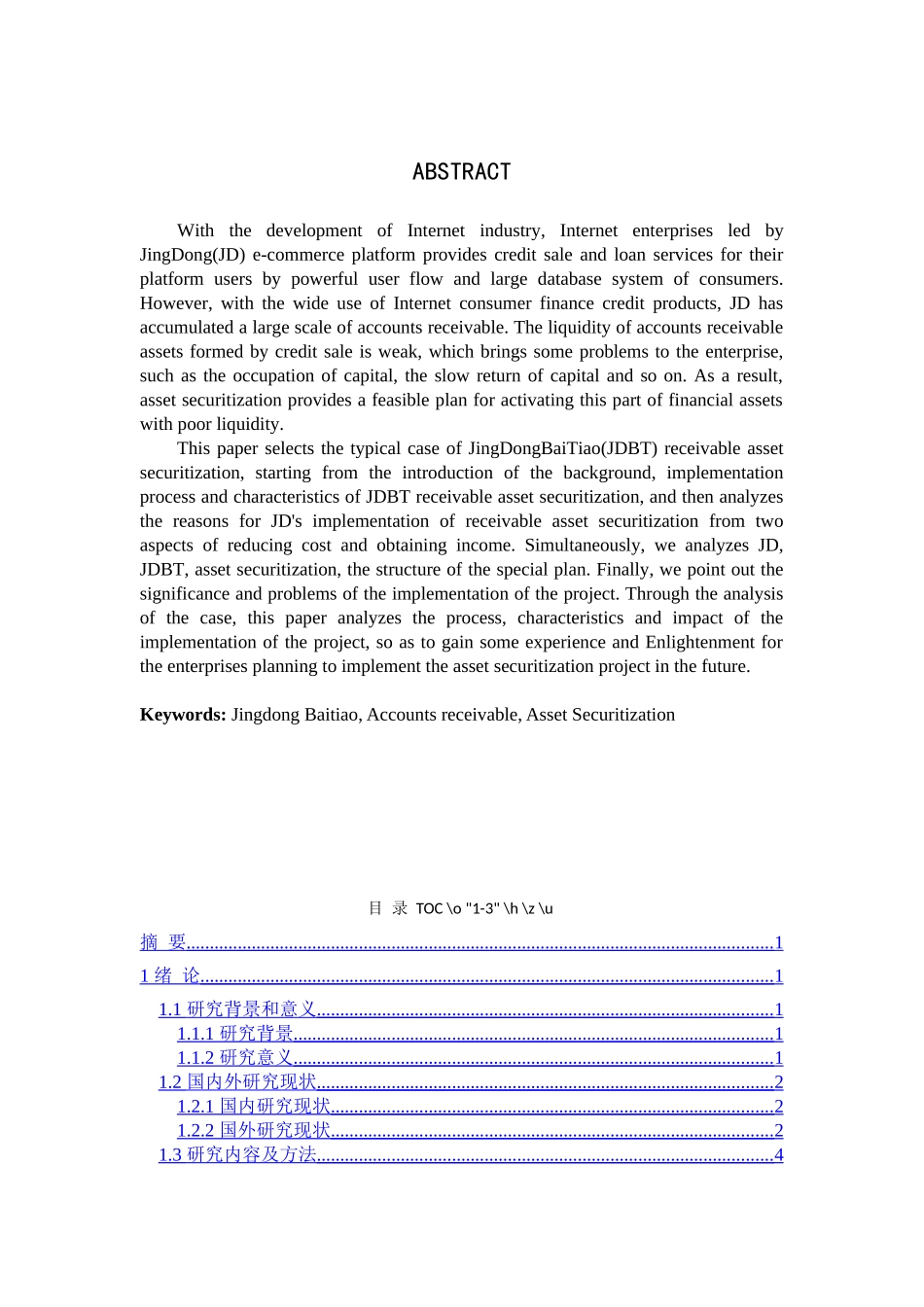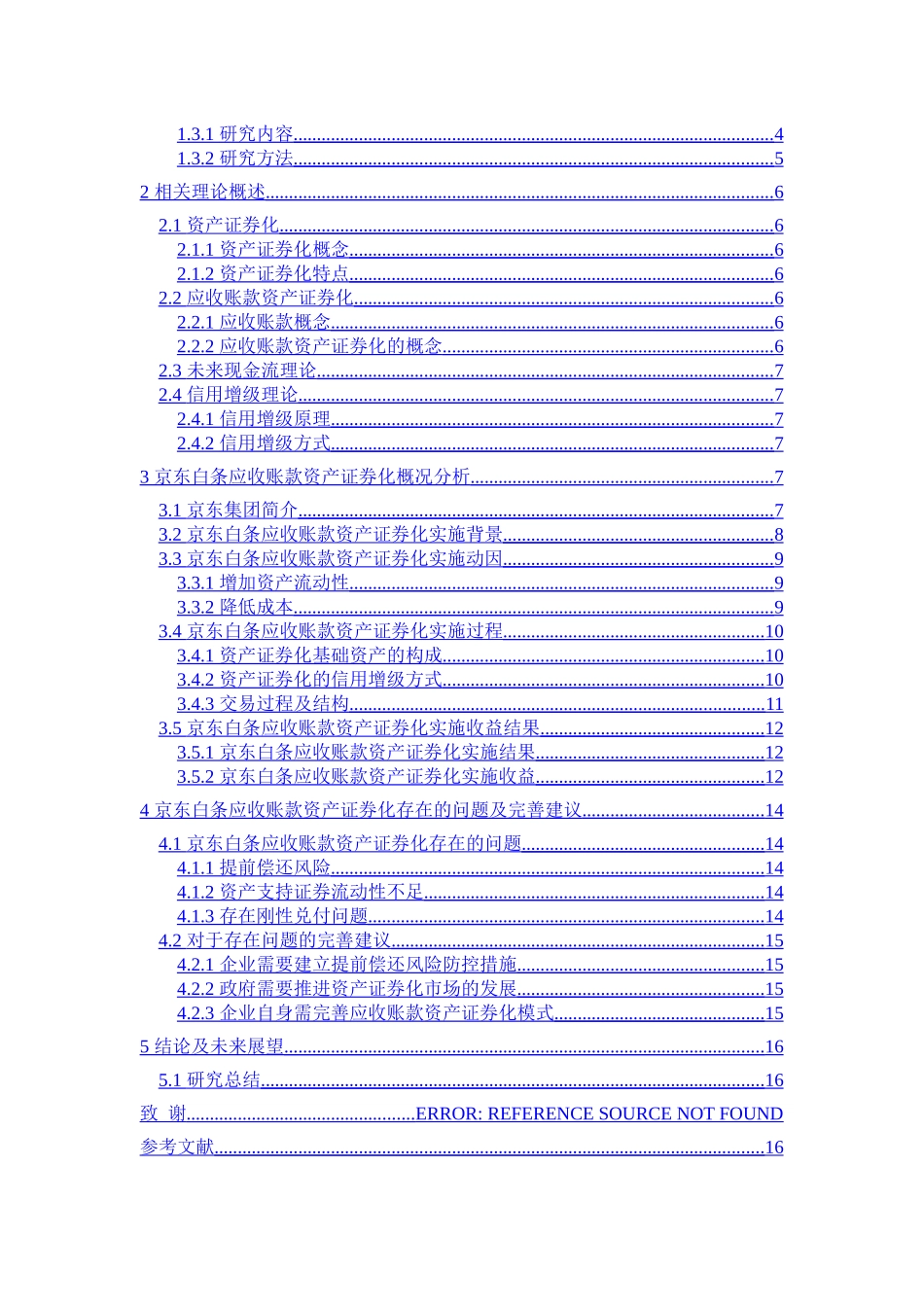摘 要随着互联网行业的发展,以京东电商平台为首的互联网企业,凭借其自身巨大的用户流量和强大的消费者大数据库系统,为自身平台用户提供信用赊销和借贷服务。但是随着互联网消费金融信用赊销产品的广泛使用,使得京东也积累下了规模巨大的应收账款。这些信用赊销形成的应收账款资产流动性较弱,给企业带来了资金被占用、资金回流速度慢等资本结构不合理等问题。于是,资产证券化业务为盘活这部分流动性较差的金融资产提供了一种可行性方案,应收账款证券化由此营运而生。本文选取京东白条应收账款资产证券化这一典型案例,先对京东集团以及京东白条应收账款资产证券化背景进行概述,然后详细介绍京东白条应收账款资产证券化的实施过程及实施结果,最后分析京东白条应收账款资产证券化的动因和收益,基于前文的分析,对于发现的问题提出相应的完善措施,给以后实施资产证券化的企业提供一定的参考价值。关键词:京东白条;应收账款;资产证券化ABSTRACTWith the development of Internet industry, Internet enterprises led by JingDong(JD) e-commerce platform provides credit sale and loan services for their platform users by powerful user flow and large database system of consumers. However, with the wide use of Internet consumer finance credit products, JD has accumulated a large scale of accounts receivable. The liquidity of accounts receivable assets formed by credit sale is weak, which brings some problems to the enterprise, such as the occupation of capital, the slow return of capital and so on. As a result, asset securitization provides a feasible plan for activating this part of financial assets with poor liquidity.This paper selects the typical case of JingDongBaiTiao(JDBT) receivable asset securitization, starting from the introduction of the background, implementation process and characteristics of JDBT receivable asset securitization, and then analyzes the reasons for JD's implementation of receivable asset securitization from two aspects of reducing cost and obtaining income. ...


